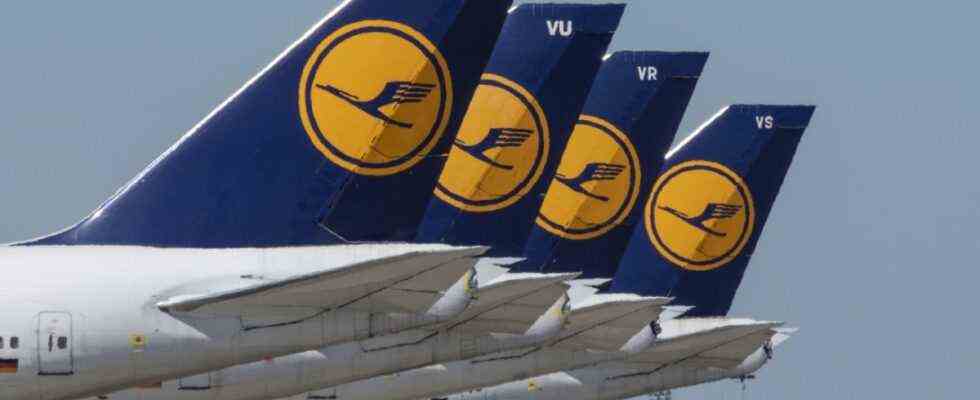To understand it, a quick look back to 2017. Air traffic was booming, and with it Lufthansa. The group had long wanted to get the coveted five-star rating from the Skytrax agency, which would distinguish it as one of the best airlines in the world. But the project kept failing. Above all, the constant pilot strikes annoyed examiners and passengers. A seemingly never-ending conflict about savings, outsourcing and goods in possession disrupted what is now a fairly ideal world. Then finally, in autumn 2017, the breakthrough came: with a so-called “perspective agreement” there was calm for four years. The grueling conflicts seemed to be a thing of the past.
But if things go stupid for the airline, pilots and passengers, both sides are currently heading for the next major conflict, which could perhaps escalate as early as the summer. At the end of last week, Lufthansa terminated the perspective agreement, which was only referred to internally as PPV, on June 30, 2022. The initially slightly perplexed union Vereinigung Cockpit (VC) gathered briefly and on the next day terminated the currently applicable collective wage agreement also on June 30. The negotiations on all other issues have been put on hold for the time being.
The matter is extremely complicated and can best be understood in terms of two timelines and the associated levels of action, a long-term and a short-term.
The long-term one concerns the perspective agreement: In 2017 Lufthansa had assured the pilots for the core brand Lufthansa and the then still existing subsidiary Germanwings that they would always be allowed to operate at least 325 aircraft. In return, the pilots agreed to make various concessions to become more productive and thus reduce unit costs by an arithmetical 15 percent. She also gained more freedom when it came to using other airlines in the group on former Lufthansa routes. In the good years, the 325 machines were not a problem at all.
Far from the traffic level of 2019
But then came the corona pandemic. At times almost the entire fleet was on the ground. Lufthansa is still far from the traffic level of 2019. There is a crisis clause that suspends the agreement. But the board argues that the number 325 will no longer be reached in the long term. So give notice and negotiate all over again. Only 250 aircraft are now considered realistic.
The short-term level concerns crisis management. Lufthansa has too many pilots. So far, she has not dismissed any of them, instead sending the unnecessary ones to state-financed short-time work and evened out the difference between the assessment limit and the actual salaries to almost 90 percent herself. So far, the crisis has gone extremely smoothly for the pilots. But the short-time work ends in March and the time for a regulation is pressing afterwards. For more than a year now, Lufthansa has been committed to agreeing mandatory part-time work for all pilots until there is enough work for everyone again.
The VC was in no hurry, to say the least. She was clearly betting that air traffic would recover quickly and that the need for part-time concessions would be much less in the next year. Then came the delta variant of the coronavirus, then Omikron and it becomes clear that the crisis is far from over. So it may be that more part-time work is needed than was conceivable a few months ago.
So there are many unresolved questions, including why Lufthansa has just now terminated the perspective agreement when it might still be able to hope for an agreement on short-time work? The answer can possibly be found in the small print: According to the agreement, Lufthansa may only slowly reduce the number of agreed aircraft over a period of years after the termination. But since around 400 pilots go through a volunteer program in the summer, the base could get smaller faster – there will then no longer be enough pilots for 325 aircraft. Normally fines would be payable if the actual number of machines is less than the agreed one.
In aviation circles it is said that everyone knows that 325 was a number from another time that can be negotiated. They are more concerned about the growth of offshoots such as Eurowings and Eurowings Discover, which are taking over former Lufthansa routes with less paid colleagues. Lufthansa, on the other hand, believes it can argue from a position of strength: the 15 percent lower unit costs remain and, according to a relevant court ruling, it also sees its freedom of choice when using cheap subsidiaries strengthened.
So she wants to get all the benefits from the perspective agreement, but no longer guarantees the 325 machines. It could be that the union is now wondering why it should make concessions at all. By terminating the collective wage agreement, she is already ready to go on strike. Whether a new pilots strike would be politically feasible after Lufthansa and the jobs in the cockpit have just been saved with billions of government aid that has since been repaid is another matter.

